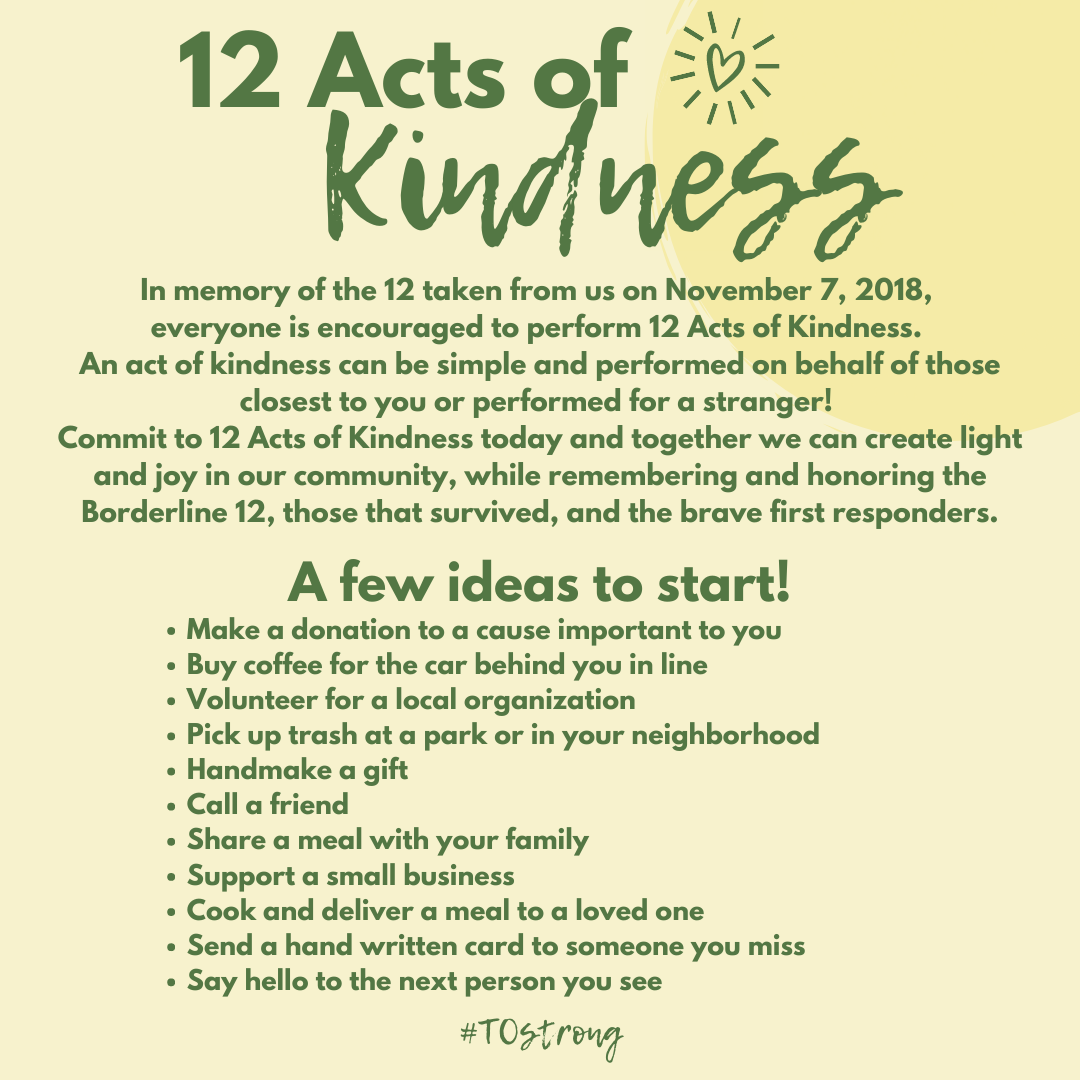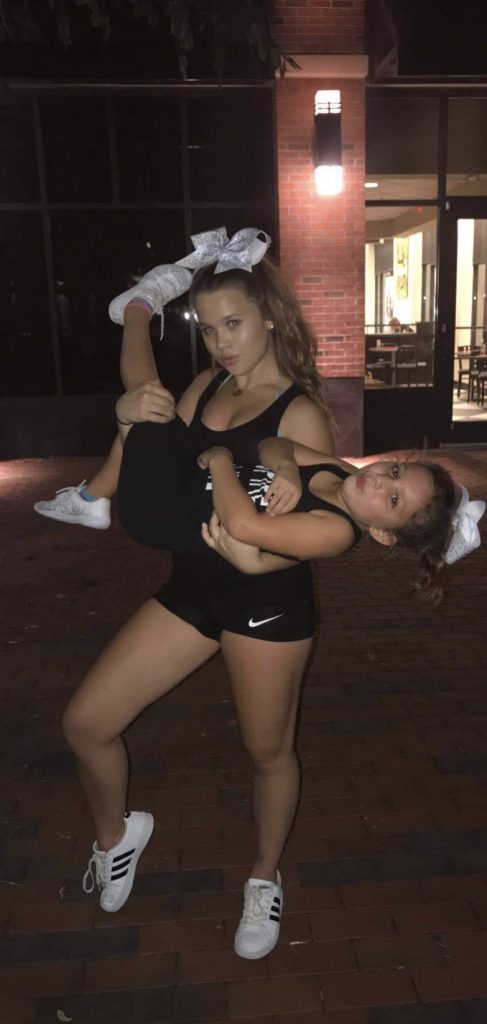Assignment Takeaway 4
In assignment 4, I was tasked with doing five nice things for people I do not know. This assignment really opened my eyes to all the benefits of spreading random acts of kindness. In the first situation, I gave a compliment to a random stranger. I was at the local mall and noticed a lady with a cute top on. This prompted me to compliment her outfit. This compliment instantly made the lady smile which also made me smile. This assignment made me reflect on how a simple act of kindness can go a long way. My life would change if this one good act a day requirement was permanently practiced.
After realizing that a single compliment could have a much larger impact, I continued to do one good act a day. The next act was purchasing a stranger’s lunch. I was in the drive-thru of a fast-food restaurant. When I got to the window to pay, I asked to pay for the car behind me. I was unable to see the stranger’s reaction, but it still made my heart happy knowing that I probably made someone’s day. My third act of good was bringing cookies to work. My younger sisters and I made cookies the night before and I had enough extras to give my entire shift a cookie. I am not super close with everyone on my shift, so I was prompted by the hope of creating new friendships. Everyone was super excited to get a sweet treat and was very appreciative. Next, I offered to take a picture of a couple at Colonial Williamsburg. I grew up around Colonial Williamsburg. I have many memories there and when I saw a couple, I offered to take their photo. What inspired me to do this was the fact that a simple picture can keep the memory alive in a few years. In the moment the couple was very appreciative and said they liked the photos. My last act of good was donating toys, food, and cleaning supplies to a local humane society. Even though a lot of the donations benefit the animals, it also benefits shelter workers to ensure they have the materials to provide the best care they can. I am a huge animal lover and it made me feel good to support a cause I care about.

I chose this representative image because completing five simple acts of good makes me want to make the one good act a day a permanent practice in my life. This image lists several ideas of acts of kindness as well as many benefits of this practice. Simple acts can create light and joy within the community and make everyone involved feel good.
Assignment Takeaway 3
After taking the Styles of Love Questionnaire, I got a deep look at my personal style of love and at how my means compare with those of my gender. In the EROS style, I scored 2.4 while the mean female mean is 2.3. The female mean in the LUDUS style is 3.6. However, I scored 3.1. Next, I scored 3.3 in STORAGE style while the female mean was 2.5. In PRAGMA style I scored 2.3 while the female mean is 2.8. MANIA style female mean is 3.0. I scored 2.3. Finally, I scored 2.3 in AGAPE style while the female mean is 2.4. Scores in these categories are inversely related to that style of love. I moderately agree with my scores as it reflects the experiences, I have been through but neglects individual changes over time. For example, I have been through many toxic relationships and have been cheated on. This made me very uncertain of myself and my partner. This reflected on the Styles of Love Questionnaire when I scored low in MANIA style. While I think the questionnaire is accurate for the time being, I think my attitudes towards situations change as I grow and mature.

I chose this visual representative image for this assignment takeaway because it embodies another one of my attitudes toward love styles. I have read and learned about horoscopes for years and feel like certain characteristics/traits of the signs play an important role in love. To further elaborate, I am a cancer, and the image shows I am highly compatible with Scorpios and Pisces. This represents shared values, attitudes, and sexual compatibility between signs.
Assignment Takeaway 2
In assignment 2, we were tasked with providing representative images of our self-identity. I used photos from my social media accounts such as Instagram and Snapchat to find photos. I also used several photos from my favorite album in my camera roll. I chose six images to represent my style and myself. The six photos that represent my self-identity included photos such as selfies, my pets, gymnastics, my siblings, my friends, and my most played music songs.
Selfies capture how I see myself and my physical appearance. These front facing photos only show how I see myself and lack how the rest of the world sees me. This represents the half-understood side of myself. Photos of my pets are really important to me because they show my love of animals and “family members” who have comforted me in times of need. In addition, the images of my pets represent domestication. My next image was an image of me on a balance beam. I have done gymnastics since I was eight years old. This image shows my athletic side and a way to keep me balanced. Being active provides me with an outlet to release stress and anger. The image of my siblings illustrates my caring and compassionate side. I often take care of my siblings while my parents are at work and became a “motherly” figure in their life. My friends are such a huge influence in my life and have played a huge role in major decisions in my life. I felt like it was very important to include an image of them as it has made such a big impact on who I am today. Finally, I included an image of my music playlist. This image shows my creative side. Music is also an outlet for me to express my emotions.

In this assignment, I learned how to analyze myself. I used six photos to “define” myself. All the photos vary and show different parts of my life to show who I am. The image above is a picture of my sister, Bailey, and I. This was one of the aspects that I felt represented me a lot. I feel like it captures a variety of things that define me such as a “mother” figure and athletics.
Assignment Takeaway 1
Representativeness heuristics can be defined as making judgments on the basis of the more a person appears to have similar characteristics or match a given group, the more likely the individual is to belong to that group. For example, when deciding if an individual is trustworthy you may think of a mental image of someone who is trustworthy. To further elaborate, a sweet older woman reminds you of your grandma, so you assume she is gentle and “trustworthy”. The use of this heuristic may lead to incorrect inferences because decisions made on the basis of this rule usually ignore base rates. In addition, cultural groups may differ in the extent to which they rely on representativeness heuristics.
Availability heuristic is a heuristic in which individuals make judgments based on how easily specific kinds of information can be brought to mind. A current example is if I see news reports throughout the several days claiming that people are losing their jobs due to COVID-19. Seeing these news reports would then make me more scared of losing my job and this fear may impact my work or perhaps progress it. The use of this heuristic may lead to incorrect inferences because it can lead us to overestimate the likelihood of events that are dramatic, but rare. This may be due to the fact that these situations are easy to bring to mind.
Next, anchoring & adjustment heuristic involves the tendency to use a number of values as a starting point in which we make adjustments. For example, when an individual with high-value numbers of bids higher on items with unknown value after being asked to write their numbers compared to people who had low-value numbers to write. The use of this heuristic may lead to incorrect inferences because while we do make adjustments, the adjustments are often not sufficient to overcome the initial impact of the anchors. The tendency to make insufficient judgment correction is greater when individuals are less capable of engaging in effortful thought.
Finally, the status quo heuristic is the idea that people often act as though they think the way things are currently is superior to any other option. This idea can be shown when students choose a seat on their first day of class and continue to sit in the same seat the rest of the semester. The use of this heuristic can lead to incorrect inferences because objects/options are more easily retrieved from memory and may not always be correct.

Untitled_Artwork-35-e1607700736354.jpg (600×419) (thedecisionlab.com)
This image represents one of the several types of heuristics I learned throughout assignment 1. I learned that a heuristic is a simple rule for making complex decisions or drawing inferences in a rapid and efficient manner. This assignment went in depth with various types of heuristics such as representativeness, availability, anchoring & adjustment, and status quo heuristic. In the image above, it highlights the status quo heuristic. In this image, the individual illustrates the idea that the way he is currently digging a hole, the spoon, is the better way. He does not accept a new method such as the shovel.